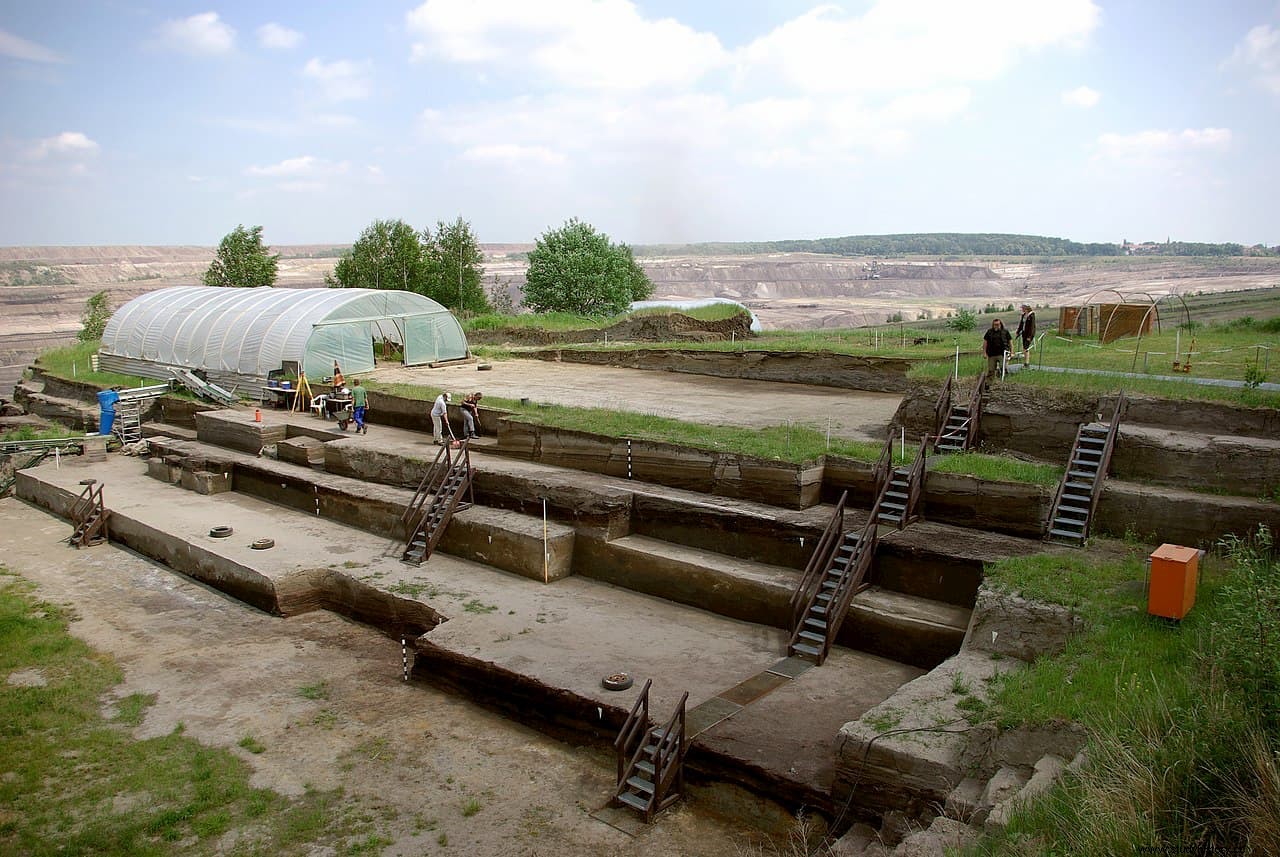When did men start making weapons? Probably millions of years ago if we include all species considered human, from Homo sapiens to Homo habilis , dating back about 2.5 million years. Throughout our prehistory, passing through Antiquity, the Middle Ages and the Modern Age, we have created objects capable of harming us, protecting us and making it easier for us to obtain food.
Archaeological and historical museums around the world are full of specimens found in excavations and deposits, surely with more abundance of metal weapons than wood, due to the perishable nature of the latter.

However, the oldest known weapons made by man that have been preserved practically intact are precisely made of wood, including in this term all members of the genus Homo . These are 8 spears that were found between 1995 and 1998 in an open pit mine in the German town of Schöningen.
Experts determined that they are about 400,000 years old and, therefore, were not the work of Homo sapiens but more likely from Homo heidelbergensis during the Lower Paleolithic, a species that became extinct about 200,000 years ago, evolving into two different populations:Europeans gave rise to Neanderthals and Denisovans, and Africans gave rise to Homo sapiens .

From the remains found next to the spears, they are related to the hunting of mammals. And it is that some 16,000 animal bones appeared in the place (90 percent of horses and the rest of red deer and European bison), which reinforces the theory that the Homo heidelbergensis he was already an intensive hunter.
The place where they were found is just one of the 13 Paleolithic sites discovered in the mine, excavated between 1992 and 2009. The fact that they have been preserved in good condition is due to the rapid covering and sealing of the archaeological layers with mud from the lake. adjacent, which allowed the organic materials not to decompose.

Bones, mainly from Equus mosbachensis and belonging to about 20 individuals, they present cut marks made with stone tools (some of which also appeared in the excavation). According to the researchers, the probable scenario would have been the following:the hunters stalked the animals hidden in the reeds on the shore of the lake, trapping them between themselves and the water, being shot down with their spears .
Moreover, from the presence of bones of young animals, they deduce that the hunt would have taken place in the fall, after the usual birth of new offspring at the beginning of the warm season.
The spears were deformed by the weight of the sediments, and are made of thin, straight spruce stems, except for number IV, which is made of pine. Its length varies between 1.82 and 2.25 meters, and its diameter between 29 and 47 millimeters.
The largest diameter corresponds to the front third of the weapon, where its center of gravity is, similar to the current competition javelins. This evidences developed technological skills and even the possibility of a craft tradition among the Homo heidelbergensis .
Until this discovery was made, the general thesis was that both this species and its descendants, the Neanderthals they had no language and lived by feeding on plants and carrion. The spears showed that the Homo heidelbergensis it had sophisticated hunting strategies and even a developed communication capacity, and therefore intellectual and cognitive abilities, then only attributed to modern humans.

But of course, there are different interpretations. Experts from the University of Tübingen believe that the spears were never on land, but would have been submerged in the lake. The bones would not be the result of a great hunt either, but would have been accumulated in many small events hunting. And they suggest that the horses were hunted in shallow water and not on the shore. All this would show less social complexity than initially expressed.
The place can be visited and currently has a museum and research center that offer information on this stage of the Pleistocene and the findings made in Schöningen.
Fonts
Hartmut Thieme, Lower Palaeolithic hunting spears from Germany (Nature doi:10.1038/385807a0) / The Subversive Archaeologist / Universiteit Leiden / Wikipedia.
